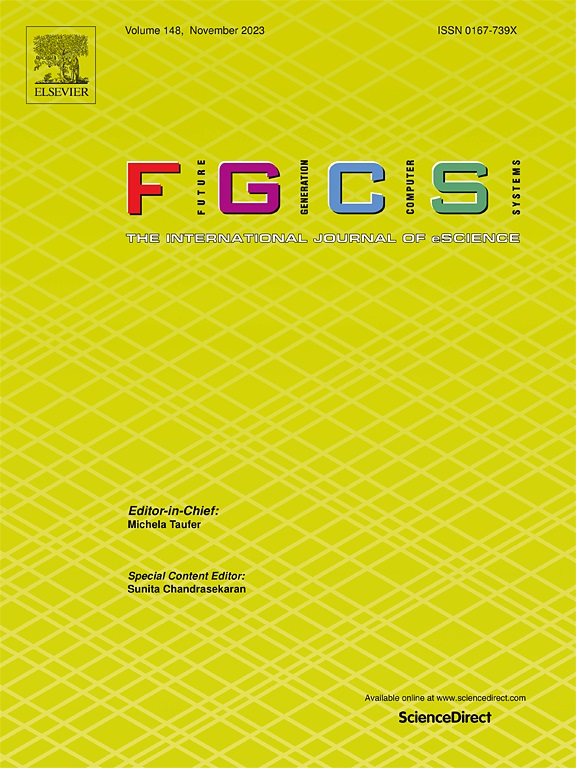基于优化驱动情感分析的无人机采购不完全三方共识算法
IF 6.2
2区 计算机科学
Q1 COMPUTER SCIENCE, THEORY & METHODS
Future Generation Computer Systems-The International Journal of Escience
Pub Date : 2025-02-19
DOI:10.1016/j.future.2025.107761
引用次数: 0
摘要
无人机产业作为低空经济的新型生产力,已成为数字经济增长的重要引擎。然而,高维的在线评论、不完整的信息系统(IISs)以及众多卖家之间的协调可能会影响无人机的购买决策。为了解决这些问题,首先利用河马优化算法优化的BiLSTM和BiGRU模型对无人机在线评论进行情感分析(SA)。同时,将Jensen-shannon (JS)散度与Hellinger距离相结合的k近邻(KNN)算法用于构建完整信息系统(CIS)。其次,对卖家进行三向聚类(TWC),然后利用完全一致性方法计算卖家权重和分组权重;第三,为了与卖家的行为紧密结合,提出了基于TWC和双重微调(DFT)理论的两阶段共识达成过程(CRP)模型,简称TWC-DFT- ccrp。在第一阶段,根据TWC的结果调整卖家的行为。第二阶段,利用基于优化的规则,降低卖家之间的冲突程度,达成共识。第四,将TWD过程与前景后悔理论(P-RT)相结合,可以降低潜在决策风险,识别最优方案。最后,以无人机在线评论为例,验证了该模型的可行性。综上所述,该方法既解决了高维数据处理的难题,又优化了大规模群体决策(LSGDM),为无人机采购提供了有效的决策支持。本文章由计算机程序翻译,如有差异,请以英文原文为准。
An incomplete three-way consensus algorithm for unmanned aerial vehicle purchase using optimization-driven sentiment analysis
As a novel productive force in the low-altitude economy, the unmanned aerial vehicle (UAV) industry has emerged as a crucial engine of the digital economy growth. However, high-dimensional online reviews, incomplete information systems (IISs), and coordination among numerous sellers may influence the purchasing decision for UAVs. To address these challenges, first, the sentiment analysis (SA) of UAV online reviews is conducted using BiLSTM and BiGRU models optimized by the hippopotamus optimization (HO) algorithm. Meanwhile, the K-nearest neighbor (KNN) algorithm that combines the Jensen–shannon (JS) divergence with the Hellinger distance is applied to construct a complete information system (CIS). Second, three-way clustering (TWC) is performed on sellers, followed by the calculation of seller weights and group weights using the full consistency method. Third, to closely align with the behavior of sellers, a two-stage consensus reaching process (CRP) model based on TWC and the dual fine-tuning (DFT) theory is proposed, referred to as TWC-DFT-CCRP. In the first stage, the behavior of sellers is adjusted based on the TWC result. In the second stage, optimization-based rules are used to reduce the conflict degree among sellers to reach consensus. Fourth, integrating the TWD process with prospect regret theory (P-RT) can reduce potential decision risks and identify the optimal solution. Finally, the model’s feasibility is demonstrated via a case study of UAV online reviews. In summary, the method not only addresses the challenge of handling high-dimensional data but also optimizes large-scale group decision-making (LSGDM), thereby providing effective decision support for purchasing UAVs.
求助全文
通过发布文献求助,成功后即可免费获取论文全文。
去求助
来源期刊
CiteScore
19.90
自引率
2.70%
发文量
376
审稿时长
10.6 months
期刊介绍:
Computing infrastructures and systems are constantly evolving, resulting in increasingly complex and collaborative scientific applications. To cope with these advancements, there is a growing need for collaborative tools that can effectively map, control, and execute these applications.
Furthermore, with the explosion of Big Data, there is a requirement for innovative methods and infrastructures to collect, analyze, and derive meaningful insights from the vast amount of data generated. This necessitates the integration of computational and storage capabilities, databases, sensors, and human collaboration.
Future Generation Computer Systems aims to pioneer advancements in distributed systems, collaborative environments, high-performance computing, and Big Data analytics. It strives to stay at the forefront of developments in grids, clouds, and the Internet of Things (IoT) to effectively address the challenges posed by these wide-area, fully distributed sensing and computing systems.

 求助内容:
求助内容: 应助结果提醒方式:
应助结果提醒方式:


